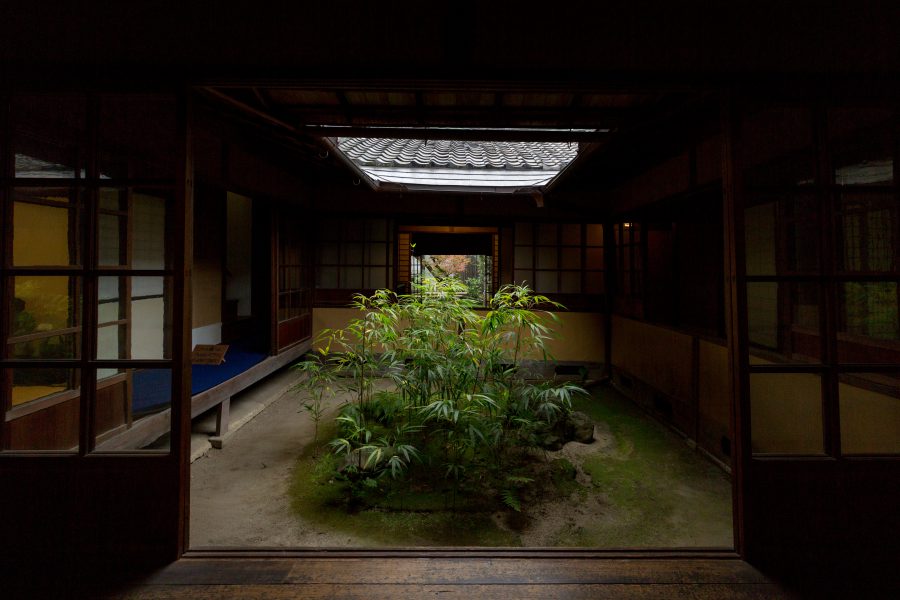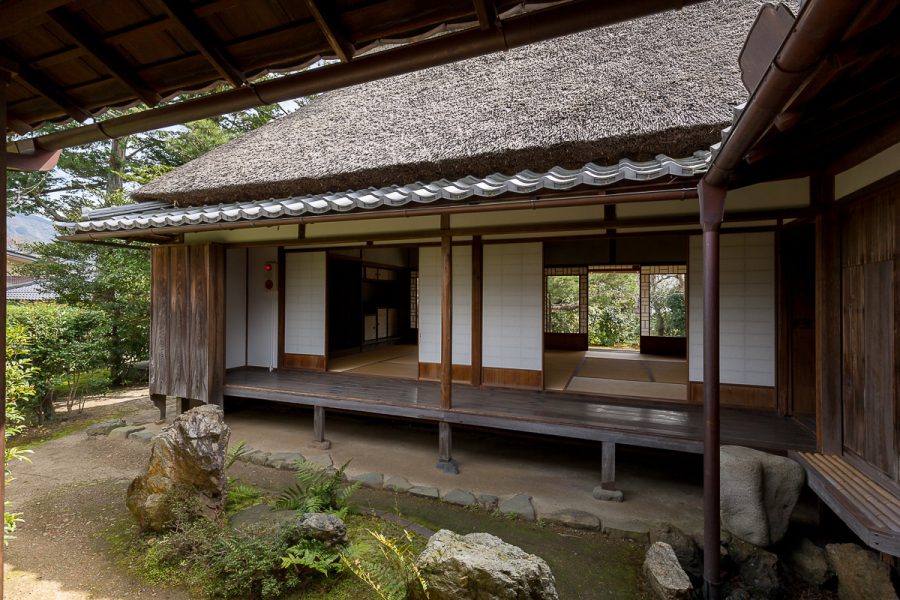Garden Knowing/
keywords
Tsubo-niwa: The Enclosed Garden

Murin-an’s enclosed garden uses a simple composition of scenic stones and square bamboo in moss that creates a bright atmosphere inside the main house and connects it to the garden landscape outside.
Tsubo-niwa: The Enclosed Garden
The Japanese enclosed garden (or “tsubo-niwa”) has been poignantly called “the garden that isn’t a garden.” (*1) That’s because these interior garden spaces are so small and integrated with their architecture that they almost seem to lack any independent identity of their own. Yet this apparent absence of autonomy is perhaps what makes the tsubo-niwa so quintessentially “Kyoto.” Far more than any other Japanese garden form, the enclosed garden has evolved as an intimate presence in the daily lives of Kyoto citizens.
It would certainly be no mistake to say that the question of how to use enclosed space has been one of the driving motifs in Japanese gardening history. In Kyoto’s aristocratic residences, “tsubo” referred to an enclosed space where the nobility could enjoy planting flowers and plants of their preference. Zen Buddhist temples later used these same “tsubo” plots for rock arrangements that symbolically suggested natural scenery on a grand scale. Likewise, the Japanese tea garden originally evolved from the enclosed spaces used to separate the outside world from the controlled environment of the teahouse.
But the enclosed garden so familiar to Kyotoites today is inseparably identified with the urban crowding that occurred with the rise of Japan’s merchant class in the sixteenth century. Because Kyoto’s streetscape is organized along a grid pattern, economic development inevitably resulted in long and skinny merchant townhouses (machiya) that filled the imperial capital. In such narrow spaces, the tsubo-niwa evolved into a unique courtyard garden ingeniously allowing a non-urban oasis with abundant sunlight and air to coexist alongside a busy place of commerce. For architecture and gardens today, this is an ecological idea that remains fresh with possibilities.
Rather than develop its own formal language, the enclosed garden has typically borrowed from the dry landscape and tea garden vocabularies. Yet by emancipating itself from the dry landscape garden’s profound symbolism and the tea garden’s painstaking spatiality, the tsubo-niwa can completely dedicate itself to the generation of ambience.(*2) If it is the least autonomous of all Japan’s garden forms, it is also perhaps the freest. That’s why it has the greatest liberty to incorporate and express the interests of the inhabitants it lives alongside. Thus, the old truism about pets who come to resemble their masters might apply equally well to the enclosed garden. For their owners, that’s just how dear these “non-gardens” become.
*1 Nakamura Masao, Kyō no tsuboniwa (Shinshindō shuppan, 1976) 135
*2 Ibid, 200

At the Former Retreat of Tomomi Iwakura, there is an enclosed garden integrated into the space connecting the main house to the attached house.
